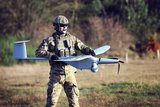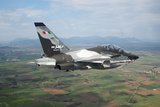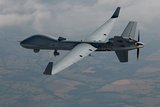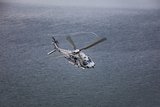NAVAIR awards major contract modification for F135 jet engine
Pratt & Whitney F135 engine pictured during accelerated mission testing in 2021. (Photo: USAF/Jill Pickett)
Naval Air Systems Command (NAVAIR) has issued a $769.87 million contract modification to Raytheon Technologies and Pratt & Whitney Military Engines in support of F135 engine requirements for the USAF, USMC, USN, FMS customers and ‘non-Department of Defense participants’, the DoD announced on 23 September.
The modification increases the contract ceiling to procure spare parts for the F135 propulsion system that powers the F-35 Lightning II aircraft.
Raytheon and Pratt & Whitney will also supply support equipment and depot lay-in material for the F-135.
Related Articles
NAVAIR orders more Triton support from Northrop Grumman
NAVAIR awards annual F-35 engine sustainment contract
Australian F135 engine maintenance and upgrade depot reaches full capability
Work will be performed at seven US locations plus Bristol (UK) and Santa Isabel (Puerto Rico), for completion by December 2025.
According to Shephard Defence Insight, the F135 delivers more than 40,000lb of thrust and is one of the most advanced engines in the world.
Related Equipment in Defence Insight
More from Air Warfare
-
![Poland air report: Drones, transport aircraft and tankers dominate potential procurement plans]()
Poland air report: Drones, transport aircraft and tankers dominate potential procurement plans
With a rising defence budget and equipment list, Poland’s air market is set to grow as the country continues to modernise its transport and helicopter fleets while seeking out uncrewed aerial vehicles and loitering munitions.
-
![Portugal signals interest in establishing A-29N final assembly line]()
Portugal signals interest in establishing A-29N final assembly line
As the launch customer for the NATO-configured variant, Portugal also took delivery of the first five A-29N aircraft from its order for 12, placed in 2024.
-
![Leonardo signs contract on Austria’s M-346 aircraft order]()
Leonardo signs contract on Austria’s M-346 aircraft order
The first of the 12 M-346 aircraft are expected to be delivered to the Austrian Air Force by 2028, according to the company.
-
![2025 UAV market review: $7.8 billion in new contracts signed as US leads spending]()
2025 UAV market review: $7.8 billion in new contracts signed as US leads spending
Qatar and Indonesia followed the US’s high spending on new uncrewed aerial vehicle contracts across 2025, while MALE and micro drones and loitering munitions were particularly popular subcategories this year.
-
![German Navy in “ramp-up” phase as it welcomes first NH90 Sea Tiger delivery]()
German Navy in “ramp-up” phase as it welcomes first NH90 Sea Tiger delivery
With all 31 aircraft set to be delivered by 2030, the helicopters will gradually replace the ageing Sea Lynx fleet which are due to be retired in 2026.






















